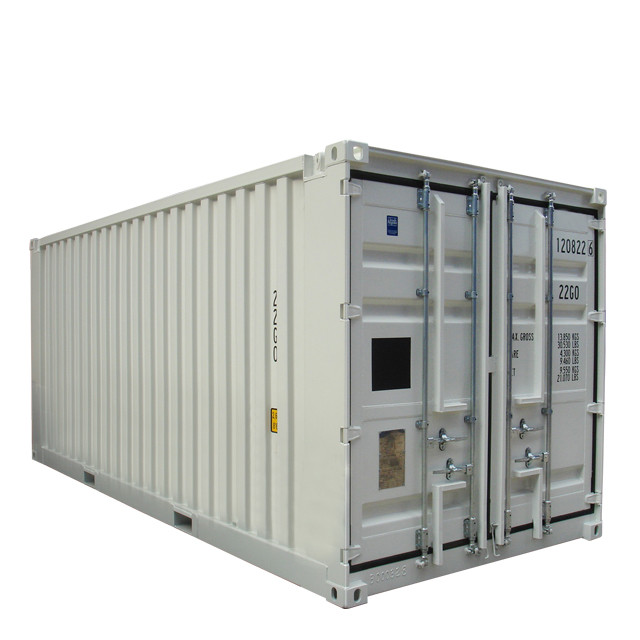Beijing Silk Road Enterprise Management Services Co.,LTD |
|
Verified Suppliers
|
DNV Certificate 39.90CBM 20ft Container Red color Corten-A Material New Condition
1.introduction
An intermodal container is a large standardized shipping container, designed and built for intermodal freight transport, meaning these containers can be used across different modes of transport – from ship to rail to truck – without unloading and reloading their cargo. Intermodal containers are primarily used to store and transport materials and products efficiently and securely in the global containerized intermodal freight transport system, but smaller numbers are in regional use as well. These containers are known under a number of names, such as simply container, cargo or freight container, ISO container, shipping, sea or ocean container, container van or (Conex) box, sea can or c can.
Intermodal containers exist in many types and a number of standardized sizes, but ninety percent of the global container fleet are so-called "dry freight" or "general purpose" containers,durable closed steel boxes, mostly of either twenty or forty feet (6.1 or 12.2 m) standard length. The common heights are 8 feet 6 inches (2.6 m) and 9 feet 6 inches (2.9 m) – the latter are known as High Cube or Hi-Cube containers.
Just like cardboard boxes and pallets, these containers are a means to bundle cargo and goods into larger, unitized loads, that can be easily handled, moved, and stacked, and that will pack tightly in a ship or yard. Intermodal containers share a number of key construction features to withstand the stresses of intermodal shipping, to facilitate their handling and to allow stacking, as well as being identifiable through their individual, unique ISO 6346 reporting mark.
In 2012, there were about 20.5 million intermodal containers in the world of varying types to suit different cargoes.Containers have largely supplanted the traditional break bulk cargo – in 2010 containers accounted for 60% of the world's seaborne trade.The predominant alternative methods of transport carry bulk cargo – whether gaseous, liquid or solid – e.g. by bulk carrier or tank ship, tank car or truck. For air freight, the more light-weight IATA-defined unit load device is used.
2.type
Other than the standard, general purpose container, many variations exist for use with different cargoes. The most prominent of these are refrigerated containers (a.k.a. reefers) for perishable goods, that make up six percent of the world's shipping boxes. And tanks in a frame, for bulk liquids, account for another 0.75% of the global container fleet.
Although these variations are not of the standard type, they mostly are ISO standard containers – in fact the ISO 6346standard classifies a broad spectrum of container types in great detail. Aside from different size options, the most important container types are:
Containers for Offshore use have a few different features, like pad eyes, and must meet additional strength and design requirements, standards and certification, such as the DNV2.7-1 by Det Norske Veritas and the European standard EN12079: Offshore Containers and Associated Lifting Sets.
A multitude of equipment, such as generators, has been installed in containers of different types to simplify logistics – see containerized equipment for more details.
Swap body units usually have the same bottom corner fixtures as intermodal containers, and often have folding legs under their frame so that they can be moved between trucks without using a crane. However they frequently don't have the upper corner fittings of ISO containers, and are not stackable, nor can they be lifted and handled by the usual equipment like reach-stackers or straddle-carriers. They are generally more expensive to procure.
| condition | new |
| color | red |
| volumn | 39.90cbm |
| type | 20FT |
| internal dimension | 5890*2314*2268MM |
| external dimension | 6058*2438*2591MM |
| certificate | DNV |
| feet | 20 |
